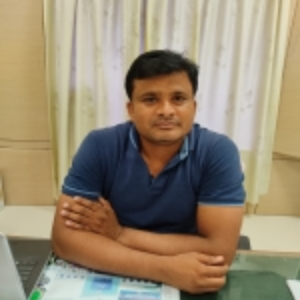
Ravi Kumar Jatoth
Work place: Department of Electronics and Communication, National Institute of Technology, Warangal, 506004, India
E-mail: jrk.nitw@gmail.com
Website: https://scholar.google.co.in/citations?user=GKyAPKYAAAAJ&hl=en
Research Interests: Analysis of Algorithms, Process Control System, Signal Processing, Graph and Image Processing
Biography
Dr. Ravi Kumar Jatoth, Male, has received his B.E degree in Electronics and Communications Engineering from Osmania University, Hyderabad, India in 2003 and M.Tech in Instrumentation and Control Systems from Jawaharlal Nehru Technological University, Hyderabad, India in 2005. He has also received his PHD degree from National Institute of Technology Warangal, India in 2014. He is currently working as a professor in National Institute of Technology Warangal, India. His current research areas include Digital Signal Processing, Tracking Algorithms and Process controller design.
Author Articles
Performance Analysis of Alpha Beta Filter, Kalman Filter and Meanshift for Object Tracking in Video Sequences
By Ravi Kumar Jatoth Sanjana Gopisetty Moiz Hussain
DOI: https://doi.org/10.5815/ijigsp.2015.03.04, Pub. Date: 8 Feb. 2015
Object Tracking is becoming increasingly important in areas of computer vision, surveillance, image processing and artificial intelligence. The advent of high powered computers and the increasing need of video analysis has generated a great deal of interest in object tracking algorithms and its applications. This said it becomes even more important to evaluate these algorithms to quantify their performance. In this paper, we have implemented three algorithms namely Alpha Beta filter, Kalman filter and Meanshift to track an object in a video sequence and compared their tracking performance based on various parameters in normal and noisy conditions. The proposed parameters employed are error plots in position and velocity of the object, Root mean square error, object tracking error, tracking rate and time taken to track the object. The goal is to illustrate practically the performance of each algorithm under such conditions quantitatively and identify the algorithm that performs the best.
[...] Read more.Performance Comparison of Kalman Filter and Mean Shift Algorithm for Object Tracking
By Ravi Kumar Jatoth Sampad Shubhra Ejaz Ali
DOI: https://doi.org/10.5815/ijieeb.2013.05.03, Pub. Date: 8 Nov. 2013
Object tracking is one of the important tasks in the field of computer vision. Some of the areas which need Visual object tracking are surveillance, automated video analysis, etc. Mean shift algorithm is one of the popular techniques for this task and is advantageous when compared to some of the other tracking methods. But this method would not be appropriate in the case of large target appearance changes and occlusion. In addition, this method fails when the object is under the action of non-linear forces like that of the gravity e.g. a ball falling under the action of gravity. Another popular method used for tracking is the one that uses Kalman filter, with measurements (often noisy) of position of object to be tracked as input to it. This paper is based on a simulative comparison of both of these algorithms which will give a proper outline of which method will be more appropriate for object tracking, given the nature of motion of object and type of surroundings. Observations based on these methods are present in the literature but there is no evidence based on implementation of these algorithms that shows a quantitative comparison of the said algorithms.
[...] Read more.Other Articles
Subscribe to receive issue release notifications and newsletters from MECS Press journals